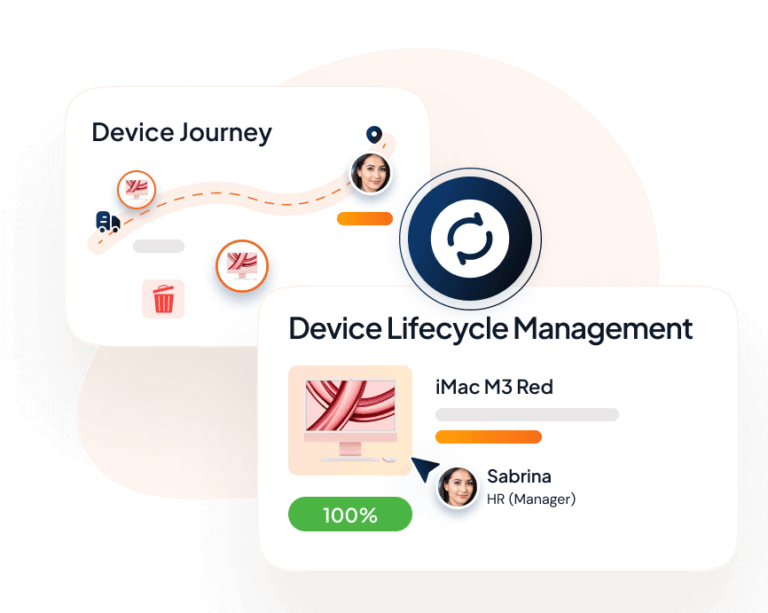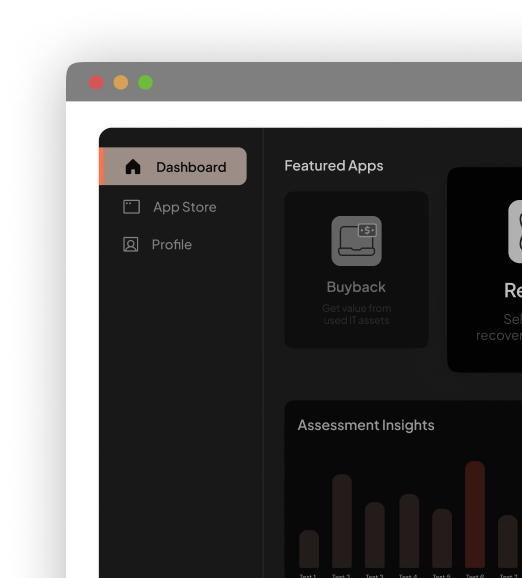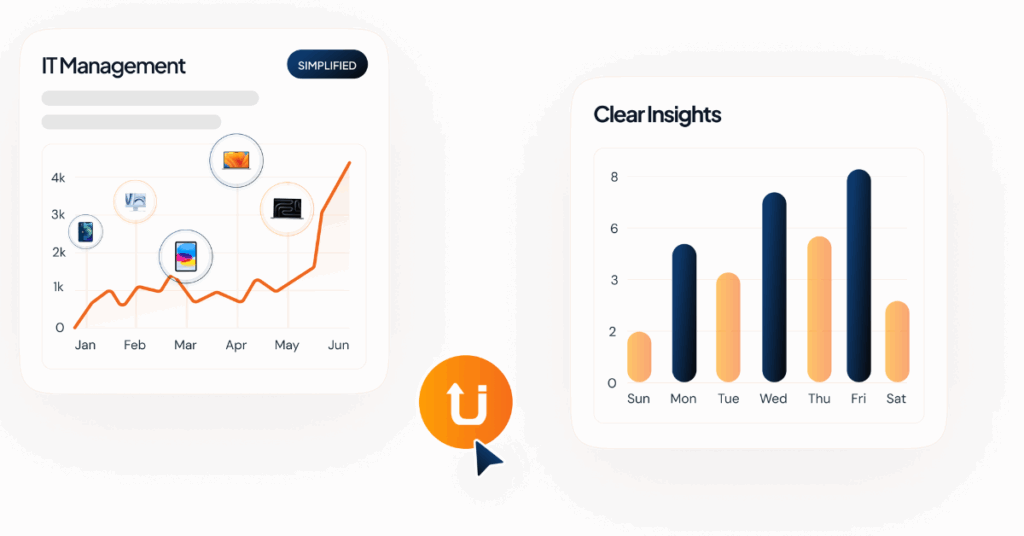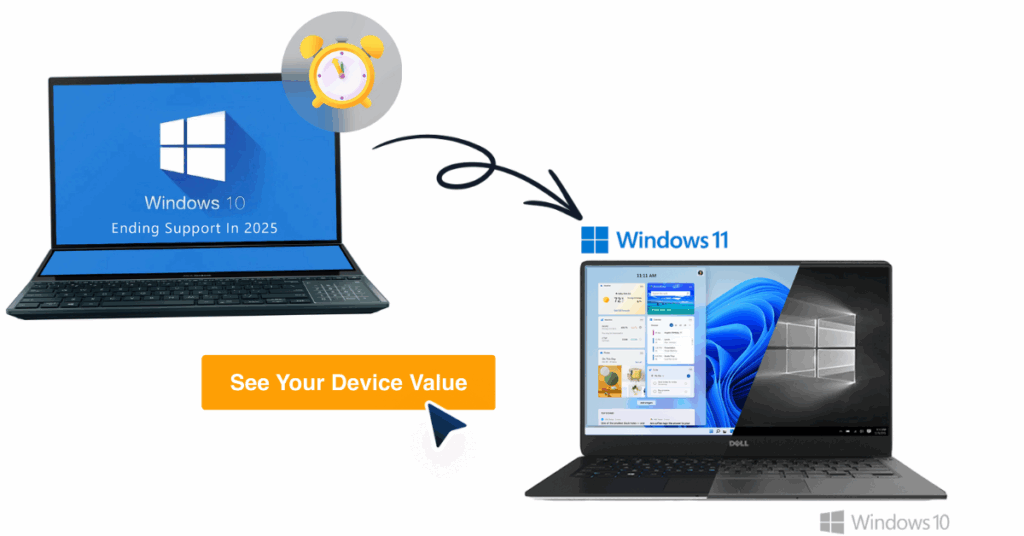Managing enterprise devices has never been more challenging. With remote work rising by 400% since 2010 and the average company using over 1,000 devices, IT leaders are under immense pressure to manage devices effectively.
From provisioning to secure disposal, every stage of the device lifecycle demands attention.
As enterprises juggle smartphones, tablets, laptops, and desktops across iOS, Android, Windows, and macOS, the risks and inefficiencies pile up.
Security breaches, outdated hardware, and rising costs are just a few consequences of unmanaged IT asset lifecycles. A structured approach to device lifecycle management is no longer optional, it’s essential.
In this guide, we’ll share insights on device lifecycle management, including IT asset lifecycle management and device lifecycle management best practices.
Key Takeaways
- Remote work’s 400% rise since 2010 and over 1,000 devices per company demand effective device lifecycle management.
- A structured DLM approach enhances security, reduces costs, and prevents breaches across diverse device types.
- Unduit automates the full IT asset lifecycle, from procurement to disposal, with real-time tracking and compliance.
- Key device lifecycle management stages are IT Asset planning, provisioning, maintenance, and decommissioning.
- AI-driven automation and centralized tracking in DLM boost efficiency and minimize downtime for enterprises.
- Streamlined device setup and lifecycle management for consistent performance across hybrid workplaces.
Unlock Seamless IT Asset Management with Unduit.
Discover how our platform automates the entire IT asset lifecycle, from procurement to disposal.
Book a Demo!What is Device Lifecycle Management?
Device Lifecycle Management (DLM) is the process of managing the complete lifecycle of a device, from procurement to disposal. This includes all the activities in different phases:
- Planning
- Procurement
- Deployment
- Maintaining
- Retiring devices
Device lifecycle management is a crucial part of any organization’s asset management strategy, as it helps to optimize the performance and costs of devices, while also ensuring compliance with relevant regulations.
Businesses of all sizes can benefit from it by properly managing IT assets and can ensure that their IT infrastructure is up-to-date, secure, and cost-effective.
A thoughtful approach to smart device management throughout their entire journey creates clarity and control in an increasingly mobile workplace.
When companies put proper tracking systems in place and use Automation to automate routine tasks, they gain clear visibility into their entire device ecosystem.
This organized approach helps teams work more efficiently while cutting down on unnecessary expenses and closing potential security vulnerabilities before they become problems.
How DLM is Important for Enterprises?
A structured device lifecycle management (DLM) strategy brings order and visibility to enterprise mobility. By implementing centralized tracking, AI-driven automation, and proactive management policies, organizations can streamline operations, reduce waste, and prevent security gaps. Explore our guide on How Can Enterprises Stay Ahead with Device Lifecycle Management.
1. Cut Mobility Costs Without Losing Control
- Unmanaged mobility expenses spiral quickly through unused devices, unnecessary plans, and billing errors.
- Strategic lifecycle management optimizes telecom expenses while maintaining productivity and security standards.
2. Strengthen Security and Reduce Compliance Risks
- Enterprise mobility creates serious security vulnerabilities through unmanaged devices and unsecured networks.
- Comprehensive lifecycle management enforces encryption, compliance monitoring, and automated security protocols.
3. Maximize Mobility Efficiency and Performance
- Manual mobility management slows IT teams and creates device bottlenecks across organizations.
- AI-driven lifecycle management automates processes, reduces downtime, and optimizes device performance.
Types of Device Lifecycle Management (LCM)
Stages of Device Lifecycle Management
Device lifecycle management typically consists of five key stages that cover the entire lifespan of a device within an organization.
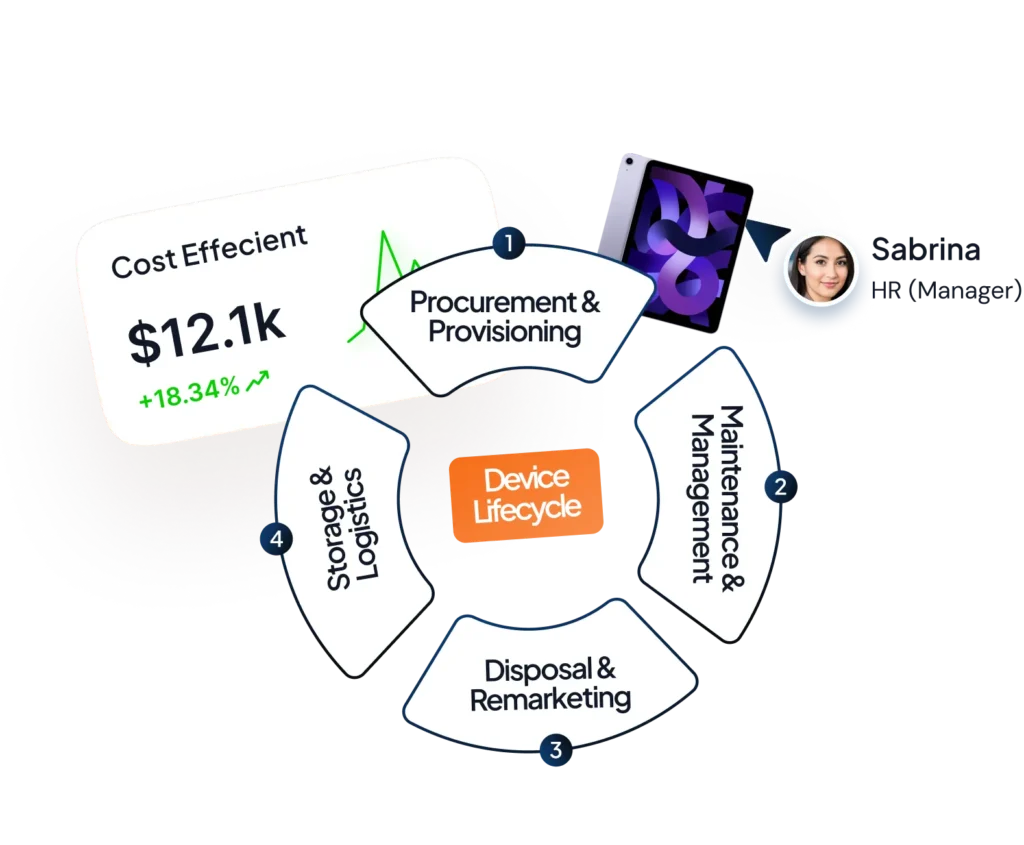
- Stage 1: Planning & Procurement
The planning stage ensures the right devices are matched to the right roles by assessing needs and auditing inventory on selecting reliable vendors, balancing quality and cost, and ensuring timely delivery. - Stage 2: Device Provisioning
This stage sets up role-based configurations, security tools, and access controls to ensure each employee receives the right resources for efficient and secure operations across the IT asset lifecycle. - Stage 3: Device Maintenance
The device maintenance stage ensures longevity, performance, and security by enforcing regular updates, monitoring, and strong access protocols across the IT asset lifecycle. - Stage 4: Device Decommissioning
In this stage, we retire IT asset lifecycle with secure data wiping, compliant recycling, and detailed documentation to protect data, reduce e-waste, and ensure regulatory compliance.
Now that you understand the full scope of Device Lifecycle Management, it’s essential to have a reliable system in place for the final stage of IT asset decommissioning. Unduit’s offers all in one dashboard, with real-time tracking where organizations can confidently manage everything from data wiping and compliance to remarketing and responsible recycling.
5 Key Benefits of Integrating DLM and ITAM
1. Enhanced Asset Tracking
DLM provides a detailed record of each device’s lifecycle, including acquisition, deployment, maintenance, and retirement, which can be seamlessly integrated into ITAM’s centralized asset database.
2. Data Quality and Accuracy
DLM helps maintain data integrity and accuracy throughout its lifecycle by implementing standardized processes for data collection, storage, and processing. This leads to more informed decision-making, reduced errors, and improved customer satisfaction.
3. Cost Optimization
DLM helps maintain data integrity and accuracy throughout its lifecycle. By understanding the lifecycle of each device, organizations can make informed decisions about upgrades, replacements, and disposal, leading to cost savings.
4. Improved Security and Compliance
DLM helps ensure devices are properly configured and patched, reducing security risks. By tracking device usage, location, and permissions, organizations can ensure compliance with regulatory requirements.
5. Data-Driven Decision Making
With real-time visibility into asset status and lifecycle, IT teams can make better decisions about resource allocation and upgrades.
Ready to organize your IT device lifecycle?
Cut costs, secure assets, and boost efficiency with smarter DLM strategies. Get started today. Schedule Your Free Demo with Unduit.
See What’s PossibleHow to Integrate ITAM with DLM?
By integrating DLM and ITAM, organizations can gain a more holistic view of their IT infrastructure, optimize asset utilization, reduce costs, and improve overall IT efficiency. A well-organized IT Asset Lifecycle Management (ITALM) ensures:
- Resources are utilized efficiently
- The lifespan of the asset is elevated
- Workload is reduced through automation and the use of the right tools
- Costs are minimized through informed budgeting and forecasting
- Compliance with legal and regulatory requirements is maintained
- All the asset details are maintained centrally to minimize data loss
1. Select an ITAM solution with DLM capabilities
Choose a system that can track device lifecycle information, including asset details, configurations, and maintenance history.
2. Integrate DLM data into the ITAM system
Ensure that DLM data, such as device serial numbers, software versions, and maintenance schedules, is automatically synced with the ITAM database.
3. Establish a consistent asset numbering system
Use unique asset numbers to identify and track each device throughout its lifecycle.
4. Implement a DLM process
Develop a standardized DLM process that covers all phases of the device lifecycle, from acquisition to disposal.
5. Regularly review and update asset information
Ensure that asset data is accurate and up-to-date to maintain the integrity of the ITAM system.
The Core Pillars of Unduit ITAM
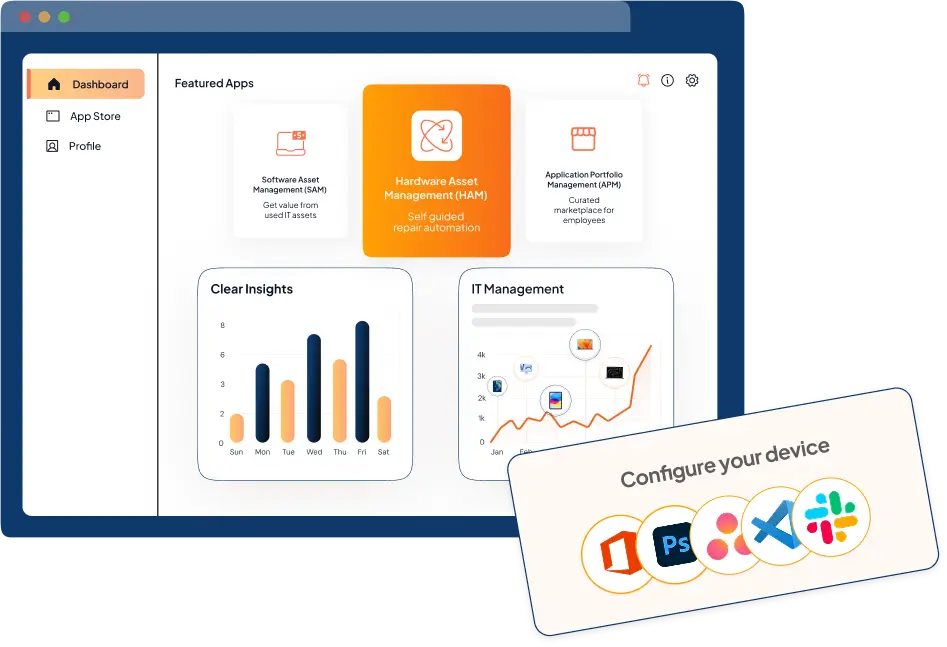
IT Asset Management (ITAM) isn’t one-size-fits-all. It’s a set of focused processes, built to manage different asset types with visibility, control, and cost-efficiency. Here’s how each core area works, and how Unduit aligns with them:
- Hardware Asset Management (HAM)
Manages the full lifecycle of physical devices i.e. laptops, servers, and network gear. From acquisition to decommissioning, HAM ensures assets are tracked, maintained, and disposed of properly. With Unduit, you get real-time tracking and automated recovery for smarter asset use and compliance. - Software Asset Management (SAM)
Optimizes software licensing and usage. SAM helps eliminate waste by identifying unused licenses while ensuring audit readiness. Unduit supports software planning with device-level insights, helping you right-size your software footprint. - Cloud Asset Management (CAM)
Tracks cloud services, usage, and spend. CAM prevents cloud sprawl and ensures licensing compliance. While not a direct cloud tool, Unduit brings the same discipline to physical asset usage, data control, and offboarding workflows. - Application Portfolio Management (APM)
Reviews and optimizes your app stack. APM identifies redundant or outdated apps and aligns tools with business goals. Unduit helps this process by surfacing device-level app usage data to inform smarter software and refresh decisions. - Enterprise Asset Management (EAM)
Focuses on non-IT infrastructure like facilities and equipment. It extends device lifecycle management to high-value assets across departments. While Unduit’s core is IT, our methods of structured decommissioning and lifecycle tracking complement broader EAM strategies.
How to Setup a Perfect Tech Stack For Device Management?
When building your tech stack for device lifecycle management, the goal isn’t just to manage hardware, it’s to stay ahead of evolving business needs. The right solution should fit how your organization works today and be flexible enough to grow with you.
Here are three essentials to keep in mind:
Smooth Integration: Your DLM tool should work effortlessly with your current systems. Tools like Vodaphone One Mobile are built to streamline processes, not complicate them, so everything runs in sync.
Industry Credibility: Go with a platform that’s trusted by those who know the space. Unduit has a long standing in managing IT asset from 15 years for its ability to handle large, complex enterprise device management needs with ease.
Reliable Support & Resources: The setup is just the start. Look for a provider that offers in-depth guidance, like Unduit’s comprehensive DLM playbook, so your team can get the most out of the platform long term.
Streamline a Complete Device Control with Unduit
When managing devices across distributed teams, Unduit provides complete control over your entire device lifecycle from purchase to secure disposal.
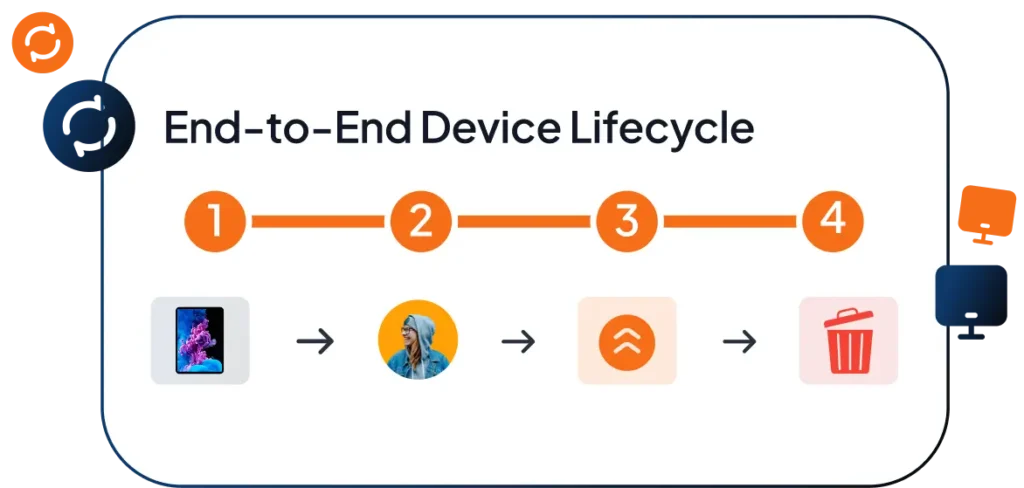
Complete Global Coverage
Manage procurement, deployment, tracking, maintenance, and disposal across 150+ countries through one platform. No juggling multiple vendors or dealing with logistics gaps.
Smart Automation
Set up automated workflows that match your company policies. Devices get configured automatically, departing employees trigger recovery processes, and maintenance schedules run themselves.
Real-Time Visibility
Get instant insights into device utilization, costs, and replacement timing. Make data-driven decisions about your entire device fleet instead of guessing when to refresh or retire equipment.
Built-In Compliance
Handle GDPR, R2 certification, and local regulations automatically throughout the complete device lifecycle. Environmental and security requirements are managed as part of the standard process.
Unduit streamlines your complete device lifecycle management by combining procurement, deployment, monitoring, maintenance, and secure disposal into one unified platform. This integrated approach protects sensitive data while reducing environmental impact and maximizing your technology investment returns.
FAQ’s
What is mobile device lifecycle management (MDLM)?
MDLM manages smartphones, tablets, and mobile devices from procurement through secure disposal. It includes device provisioning, mobile app management, security policies, and data protection for remote workers.
What is IoT Device Lifecycle Management?
IoT Device Lifecycle Management tracks connected devices from deployment to retirement. It monitors device health, manages firmware updates, ensures security patches, and handles secure decommissioning of sensors, smart devices, and connected equipment.
What are the key benefits of implementing ITAM practices?
Cost control through better purchasing decisions, improved security with complete asset visibility, reduced compliance risks, and optimized device utilization across your organization.
How does DLM help with IT security and compliance?
DLM tracks every device from deployment to disposal, ensuring proper data wiping, security updates, and regulatory compliance. It prevents data breaches by controlling device access and maintaining audit trails.
What things to consider when choosing an MDM or DLM Solution?
When choosing a solution for your company’s devices, there are several factors that you should consider to ensure that you select the best solution for your organization’s needs:
- Compatibility: Consider the types of devices that you will be managing and ensure that the solution is compatible with these devices.
- Features: Consider the features such as device enrolment, inventory management, security policy management, and DLM/MDM software.
- Integration: Consider how easy is to configure the solution with your organization’s existing systems and processes. It’s best to choose a solution that is compatible with your existing systems and can be easily integrated into your workflow.
